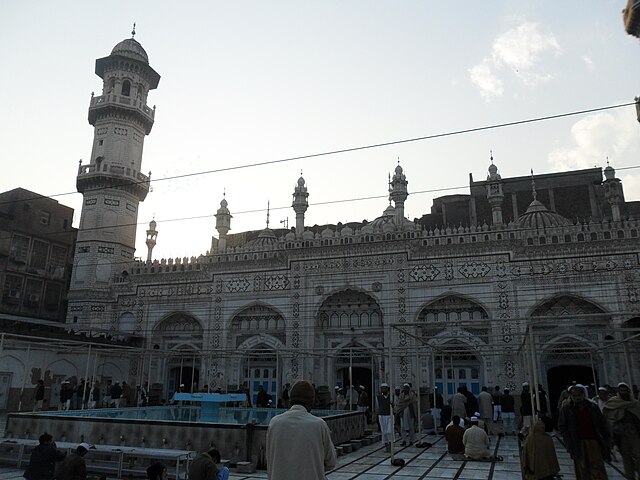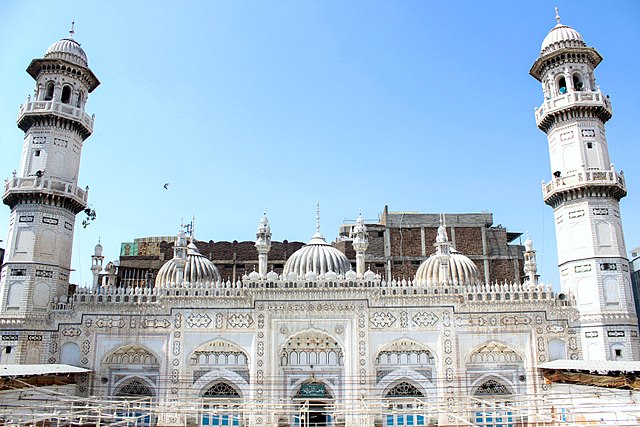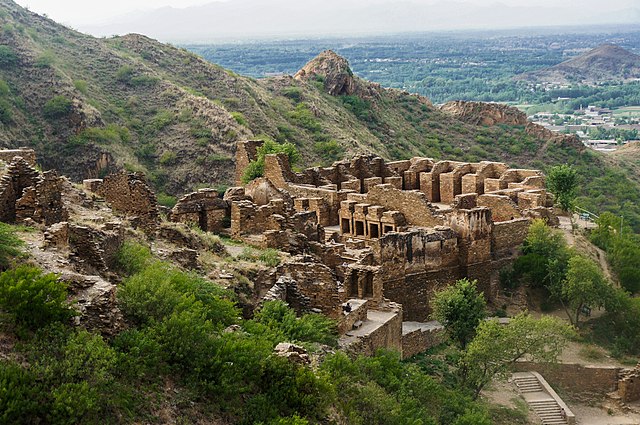The Mahabat Khan Mosque, sometimes spelt Mohabbat Khan Mosque, is a 17th-century Mughal-era mosque in Peshawar, Pakistan. The mosque was built in 1630, and named after the Mughal governor of Peshawar, Nawab Mohabat Khan Kamboh, father of Nawab Khairandesh Khan Kamboh. The mosque's white marble façade is considered to be one of Peshawar's most iconic sights.
The white marble façade of the mosque is one of the most iconic sights in Peshawar
1952
2005
The mosque's ceiling is embellished with elegant red frescoes in geometrics and floral motifs.
Peshawar is the sixth most populous city of Pakistan, with a population of over 4.7 million in the 2023 census. It is the capital of the province of Khyber Pakhtunkhwa, where it is the largest city. It is situated in the north-west of the country, lying in the Valley of Peshawar. Peshawar is primarily populated by Pashtuns, who comprise the second-largest ethnic group in the country.
Clockwise from top: Islamia College University, Cunningham Clock Tower, Sunehri Mosque, Bala Hissar, Bab-e-Khyber, Mahabat Khan Mosque
A vintage photo postcard of the main street, Peshawar. Digitized by Panjab Digital Library.
In ancient Indian subcontinent, the city of Purushapura (which became Peshawar), was established near the Gandharan capital city of Pushkalavati
The nearby Takht-i-Bahi monastery was established in 46 CE, and was once a major centre of Buddhist learning.








